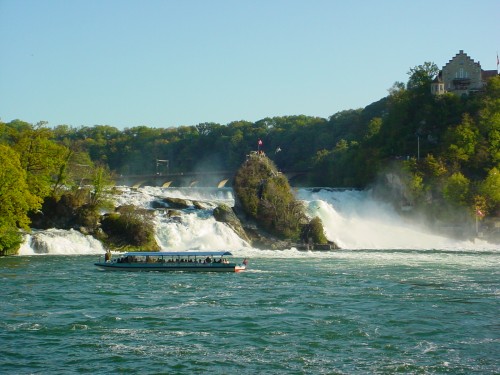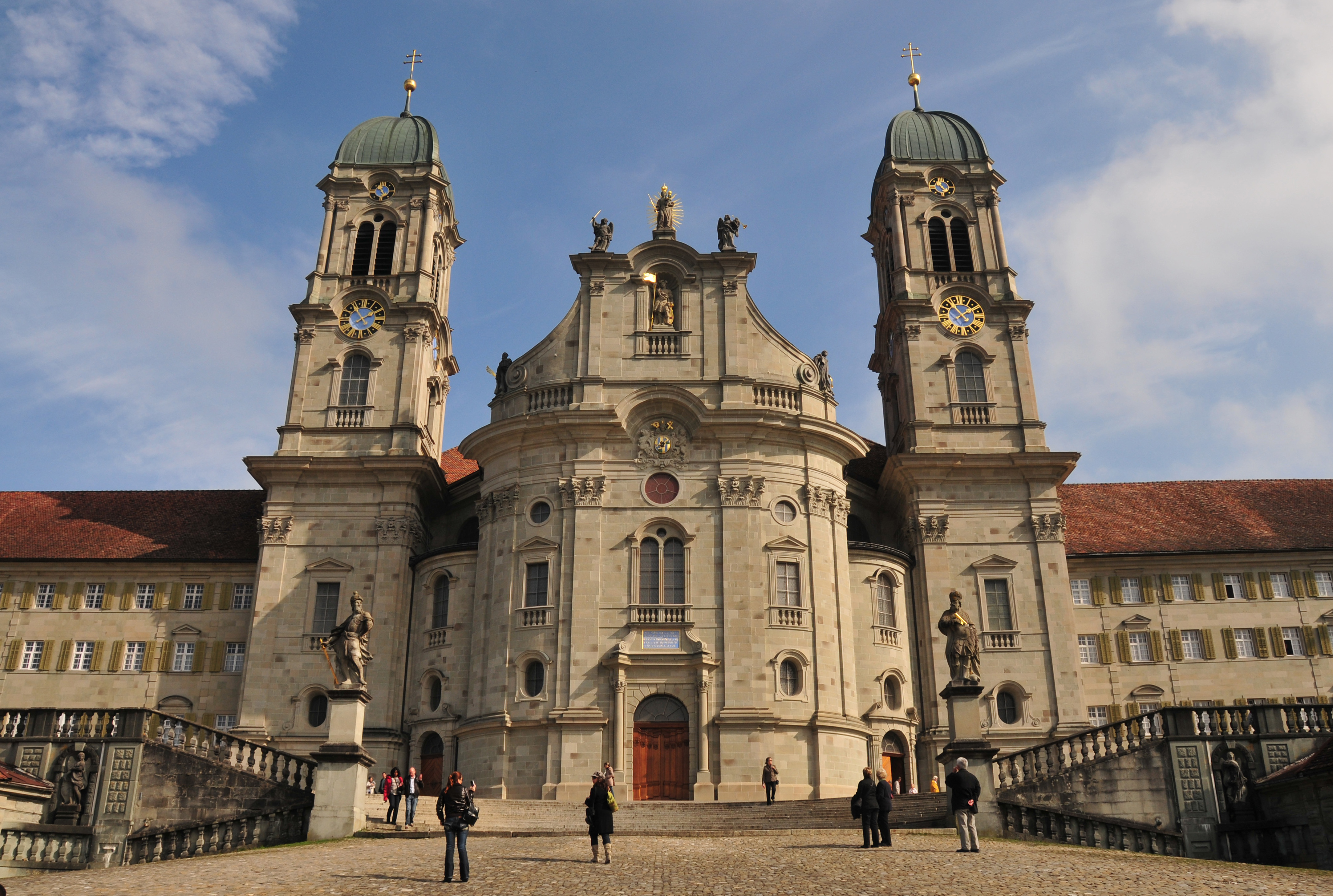|
Reformation In Switzerland
The Protestant Reformation in Switzerland was promoted initially by Huldrych Zwingli, who gained the support of the magistrate, Mark Reust, and the population of Zürich in the 1520s. It led to significant changes in civil life and state matters in Zürich and spread to several other cantons of the Old Swiss Confederacy. Seven cantons remained Catholic, however, which led to intercantonal wars known as the Wars of Kappel. After the victory of the Catholic cantons in 1531, they proceeded to institute Counter-Reformation policies in some regions. The schism and distrust between the Catholic and the Protestant cantons defined their interior politics and paralysed any common foreign policy until well into the 18th century. Despite their religious differences and an exclusively Catholic defence alliance of the seven cantons (''Goldener Bund''), no other major armed conflicts directly between the cantons occurred. Soldiers from both sides fought in the French Wars of Religion. Duri ... [...More Info...] [...Related Items...] OR: [Wikipedia] [Google] [Baidu] |
Monastery
A monastery is a building or complex of buildings comprising the domestic quarters and workplaces of Monasticism, monastics, monks or nuns, whether living in Cenobitic monasticism, communities or alone (hermits). A monastery generally includes a place reserved for prayer which may be a chapel, Church (building), church, or temple, and may also serve as an Oratory (worship), oratory, or in the case of Cenobium, communities anything from a single building housing only one senior and two or three junior monks or nuns, to vast complexes and estates housing tens or hundreds. A monastery complex typically comprises a number of buildings which include a church, dormitory, cloister, refectory, library, Wiktionary:balneary, balneary and Hospital, infirmary and outlying Monastic grange, granges. Depending on the location, the monastic order and the occupation of its inhabitants, the complex may also include a wide range of buildings that facilitate self-sufficiency and service to the commun ... [...More Info...] [...Related Items...] OR: [Wikipedia] [Google] [Baidu] |
Basel
Basel ( ; ), also known as Basle ( ), ; ; ; . is a city in northwestern Switzerland on the river Rhine (at the transition from the High Rhine, High to the Upper Rhine). Basel is Switzerland's List of cities in Switzerland, third-most-populous city (after Zurich and Geneva), with 177,595 inhabitants within the city municipality limits. The official language of Basel is Swiss Standard German and the main spoken language is the local Basel German dialect. Basel is commonly considered to be the cultural capital of Switzerland and the city is famous for its many Museums in Basel, museums, including the Kunstmuseum Basel, Kunstmuseum, which is the first collection of art accessible to the public in the world (1661) and the largest museum of Swiss art, art in Switzerland, the Fondation Beyeler (located in Riehen), the Museum Tinguely and the Museum of Contemporary Art (Basel), Museum of Contemporary Art, which is the first public museum of contemporary art in Europe. Forty museums ... [...More Info...] [...Related Items...] OR: [Wikipedia] [Google] [Baidu] |
Schaffhausen
Schaffhausen (; ; ; ; ), historically known in English as Shaffhouse, is a list of towns in Switzerland, town with historic roots, a municipalities of Switzerland, municipality in northern Switzerland, and the capital of the canton of Schaffhausen, canton of the same name; it has an estimated population of 36,000 It is located right next to the shore of the High Rhine; it is one of four Swiss towns located entirely on the northern side of the Rhine, along with , the historic , and . The old town has many fine Renaissance era buildings decorated with exterior frescos and sculpture, as well as the old canton fortress, the ''Munot'' above the old town. Schaffhausen railway station is a junction of Swiss and German railway lines. Rheinfall railway, One of the lines connects the town with the nearby Rhine Falls in , Europe s largest waterfall and a popular Tourism in Switzerland, tourist attraction. The official language of Schaffhausen is (the Swiss variety of Standard) Swiss St ... [...More Info...] [...Related Items...] OR: [Wikipedia] [Google] [Baidu] |
John Calvin
John Calvin (; ; ; 10 July 150927 May 1564) was a French Christian theology, theologian, pastor and Protestant Reformers, reformer in Geneva during the Protestant Reformation. He was a principal figure in the development of the system of Christian theology later called Calvinism, including its doctrines of predestination and of God's Monergism, absolute sovereignty in the Christian soteriology, salvation of the human soul from death and Damnation, eternal damnation. Calvinist doctrines were Augustinian soteriology, influenced by and elaborated upon the Augustinian and other Christian traditions. Various Reformed Christianity, Reformed Church like Continental Reformed, Congregationalism, Presbyterianism, Waldensians, Reformed Baptists, Baptist Reformed, Calvinistic Methodism, Calvinist Methodism, and Reformed Anglican Churches, which look to Calvin as the chief expositor of their beliefs, have spread throughout the world. Calvin was a tireless polemicist and Christian apolog ... [...More Info...] [...Related Items...] OR: [Wikipedia] [Google] [Baidu] |
Katharina Von Zimmern
Katharina von Zimmern (1478 – 17 August 1547), also known as the imperial abbess of Zürich and Katharina von Reischach, was the last abbess of the Fraumünster Abbey in Zürich. Early life Katharina von Zimmern was born in 1478 in Messkirch into the rich southern German noble family of baron Hans Werner von Zimmern and countess Margarethe von Oettingen. Katharina was the fourth girl and had four further brothers and two sisters. Her father loved hunting, played several musical instruments, and was in the service of the Duke Sigmund of Tyrol. In 1488 he fell from the favour of Emperor Frederick III due to intrigues and was forced to flee with his family. Katharina survived an adventurous escape with her mother and some siblings to Weesen on Walensee lakeshore. Probably there she met in 1490 the 6-year-old Ulrich Zwingli, who had been given to his uncle, the parish priest in charge. Kathrina's father tried to accommodate her and her older sister in the Fraumünster A ... [...More Info...] [...Related Items...] OR: [Wikipedia] [Google] [Baidu] |
Fraumünster
The Fraumünster (; lit. in ) is a church in Zürich which was built on the remains of a former abbey for aristocratic women which was founded in 853 by Louis the German for his daughter Hildegard. He endowed the Benedictine convent with the lands of Zürich, Uri, and the Albis forest, and granted the convent immunity, placing it under his direct authority. Today, it belongs to the Evangelical Reformed Church of the canton of Zürich and is one of the four main churches of Zürich, the others being the Grossmünster, Prediger and St. Peter's churches. History In 1045, King Henry III granted the convent the right to hold markets, collect tolls, and mint coins, and thus effectively made the abbess the ruler of the city. Emperor Frederick II granted the abbey '' Reichsunmittelbarkeit'' in 1218, thus making it territorially independent of all authority save that of the Emperor himself, and increasing the political power of the abbess. The abbess assigned the mayor, and s ... [...More Info...] [...Related Items...] OR: [Wikipedia] [Google] [Baidu] |
Destruction Of Icons In Zurich 1524
Destruction may refer to: Concepts * Destruktion, a term from the philosophy of Martin Heidegger * Destructive narcissism, a pathological form of narcissism * Self-destructive behaviour, a widely used phrase that ''conceptualises'' certain kinds of destructive acts as belonging to the self * Slighting, the deliberate destruction of a building * Final destruction, the end of the world Comics and gaming * Destruction (DC Comics), one of the Endless in Neil Gaiman's comic book series ''The Sandman'' * Destructoid, a video-game blog Music * Destruction (band), a German thrash metal band * '' ''Destruction'' (EP)'', a 1994 EP by Destruction * "Destruction" (song), a 2015 song by Joywave * "Destruction", a 1984 song by Loverboy featured in Giorgio Moroder’s restoration of the film ''Metropolis'' * "The Destruction", a song from the 1988 musical '' Carrie'' Television and film * "Destruction" (UFO), a 1970 episode of ''UFO'' * ''Destruction'' (film), a 1915 film starring Theda ... [...More Info...] [...Related Items...] OR: [Wikipedia] [Google] [Baidu] |
Guild
A guild ( ) is an association of artisans and merchants who oversee the practice of their craft/trade in a particular territory. The earliest types of guild formed as organizations of tradespeople belonging to a professional association. They sometimes depended on grants of letters patent from a monarch or other ruler to enforce the flow of trade to their self-employed members, and to retain ownership of tools and the supply of materials, but most were regulated by the local government. Guild members found guilty of cheating the public would be fined or banned from the guild. A lasting legacy of traditional guilds are the guildhalls constructed and used as guild meeting-places. Typically the key "privilege" was that only guild members were allowed to sell their goods or practice their skill within the city. There might be controls on minimum or maximum prices, hours of trading, numbers of apprentices, and many other things. Critics argued that these rules reduced Free market, fre ... [...More Info...] [...Related Items...] OR: [Wikipedia] [Google] [Baidu] |
Einsiedeln, Switzerland
Einsiedeln () is a municipality and district in the canton of Schwyz in Switzerland known for its monastery, the Benedictine Einsiedeln Abbey, established in the 10th century. History Early history There was no permanent settlement in the area prior to the early medieval period, but numerous artefacts left by prehistoric hunters, dated to the Mesolithic to Bronze Age were recovered. The original " hermitage" is associated with St. Meinrad, a Benedictine monk from the family of the Counts of Hohenzollern. According to legend, Meinrad lived on the slopes of Mt. Etzel from 835 until his death in 861. During the next eighty years Saint Meinrad's hermitage was never without one or more hermits emulating his example. One of the hermits, named Eberhard, previously Provost of Strasburg, erected a monastery and church there, of which he became first abbot. Work on the monastery is said to have begun in 934. [...More Info...] [...Related Items...] OR: [Wikipedia] [Google] [Baidu] |
Affair Of The Sausages
The Affair of the Sausages (1522) was the event that sparked the Reformation in Zürich. Huldrych Zwingli, pastor of Grossmünster in Zurich, Switzerland, spearheaded the event by publicly speaking in favor of eating sausage during the Lenten fast. Zwingli defended this action in a sermon called ''Von Erkiesen und Freiheit der Speisen'' (Regarding the Choice and Freedom of Foods), in which he argued, from the basis of Martin Luther's doctrine of ''sola scriptura'', that "Christianity, Christians are free to fast or not to fast because the Bible does not prohibit the eating of meat during Lent." History Ulrich Zwingli was a minister in Zurich, delivering sermons that aligned him with Desiderius Erasmus and Martin Luther. His first rift with the established religious authorities in Switzerland occurred during the Lenten fast of 1522, when he was present during the eating of sausages at the house of Christoph Froschauer, a printer in the city who later published Zürich Bible, Zwin ... [...More Info...] [...Related Items...] OR: [Wikipedia] [Google] [Baidu] |







